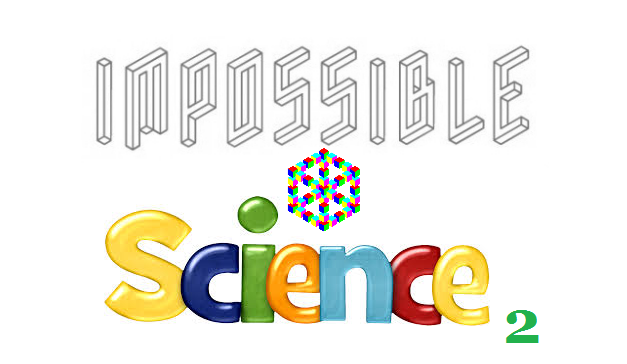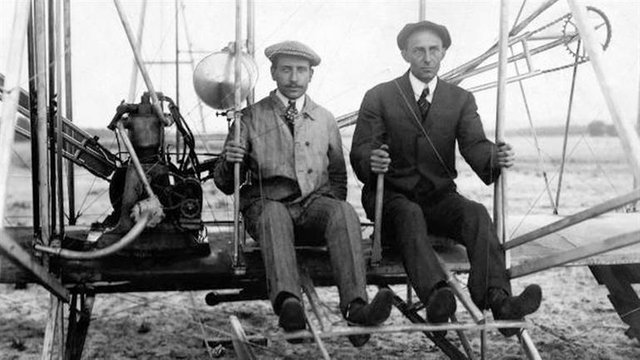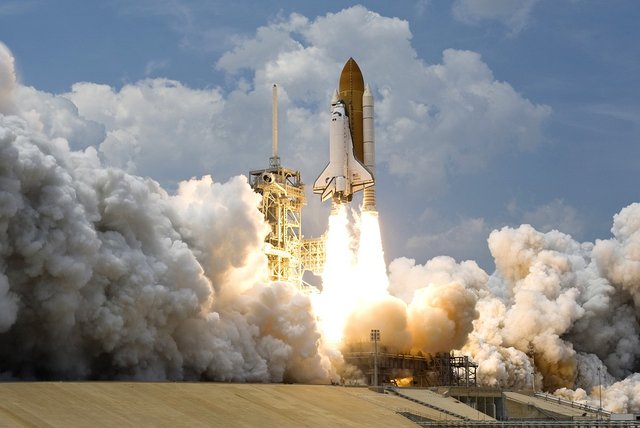Impossible Science #2
PART 2: ALMOST IMPOSSIBLE

Throughout history, many things have been declared to be impossible before they were achieved. Countless examples, such as extremophiles, knowing the composition of the distant stars, radio communication across the ocean, heavier-than-air flight, and even space travel were all once regarded as “impossible.” By looking at examples of mistakes we have made when declaring the impossible we can try to save ourselves from similar failures of imagination. These lessons from the centuries gone by teach us to be careful before we state with certainty that anything is truly impossible.
Our guide today: Sir Arthur C. Clarke

No one understood the short-sightedness of mankind's predictions about the impossible more than Science fiction writer Arthur C. Clarke the author of "2001 A Space Odyssey". Clarke proposed three laws for use when speculating on the future. To understand the insight he sheds on the problem let's examine those three laws.
Clarks Three Laws
First law: “When a distinguished but elderly scientist states that something is possible, he is almost certainly right. When he states that something is impossible, he is very probably wrong.”
Second law: “The only way of discovering the limits of the possible is to venture a little way past them into the impossible.”
Third law: “Any sufficiently advanced technology is indistinguishable from magic.”
IMPOSSIBLE HISTORY
The history of scientific advancement provides many examples of technological breakthroughs once thought to be impossible.
In 1903, astronomer Simon Newcomb concluded that powered heavier-than-air flight was impossible and that a century of advancement in science would be required to achieve it. Less than 2 months later, Wright brothers Orville and Wilbur flew their first heavier-than-air-plane.

Fifty years later 1956, Richard van der Riet Woolley, the British Astronomer Royal, proclaimed space travel to be impossible because there was no atmosphere in space and thus nothing for the rocket to push off of. Therefore travel through space would never be possible. Sputnik was launched the following year, and human spaceflight began soon after. We have never looked back.

Other technologies once thought impossible include the Radio, Television, Nuclear energy, and global Computing. Scientists and science fiction writers have not been able to imagine the scope of technological advancement.
ACCEPTED BELIEFS
History also provides examples of scientific discoveries that contradicted accepted ideas of the possible.
In 1835, philosopher Auguste Comte proclaimed that due to their distance we would never discover the chemical compositions of stars. By only 1860, a new scientific technique—spectroscopy—had revealed their elemental makeup.

Before 1970, it was believed that no living things could grow and reproduce at temperatures much above 70°C. Since then, bacteria and even multi-cellular creatures, have been found that live at much higher temperatures (up to 112°C in deep-ocean volcanic vents).

A failure of the imagination is the main risk we face in stating that something is impossible. - Sir Arthur C. Clarke
We need to understand that NO LEVEL of technical difficulty makes something impossible. If something does not contradict the laws of physics, then it is possible. Whether or not we know how to do it is irrelevant. Remember what we have learned in Impossible Science #1 and always keep in mind which kind of impossibility you mean: absolute, derived or statistical.
IN CONCLUSION
When we speak of the impossible, history has shown us we may get it wrong some of the time. Despite proceeding with caution, some of our claims may someday in the future seem as foolish as those of our ancestors do to us.
Remeber technological advances often turn yesterday's impossible into today's reality.
Questions for reader (answer in comments):
A. If scientist or engineer a century ago were somehow able to see the world of today.
Which of our technologies would be most shocking to them? Why?
Which ones would be least shocking? Why?
B. Several of the things we covered today were once thought to be impossible and turned out to be possible.
Can you think of an example of the reverse, a scientific or technological idea that was once thought possible but has proved to be impossible?
Impossible Science
#1 - THREE TYPES OF IMPOSSIBLE
#2 - ALMOST IMPOSSIBLE
Follow @pjheinz
Our cell phones would be the most shocking to scientists of yesteryear. We have compressed such an immense amount of processing power in to a hand held device, that is extremely multi-functional. In as little as 30 years ago, the amount of storage found in a lower end smart phone (16 GB) would have taken up as much apace as a home or more. The number of calculations possible per second by our phones would have seemed impossible in only 30 years ago. To a scientist from a century ago they would seem almost like wizardry.
Also, another great post @pjheinz. Keep it up!
Excellent insight @justtryme90, we can agree smart-phones would fall under Clarks Third law: “Any sufficiently advanced technology is indistinguishable from magic.”
I also think THE INTERNET is something that no-one from the past could have ever predicted. It has changed the way we do just about Everything.
I like to see from you in future some story about Robert Williams Wood :)
thank you for post!
@smailer I have taken notice of some work of his in the past and will consider including him if the topic dictates in a future part to this series.
I think they would all be shocked we weren't driving flying cars by now lol. This was in no way a boring read. Good stuff man.
The Jetson were one of my favorite shows growing up, so your answer is one of my personal favorites. Thanks for giving it a read stay tuned for the next part.
Will do. I think we should at least have some hover boards from back to the future.
This was a fantastic post! I really liked the line "A failure of the imagination is the main risk we face in stating that something is impossible." This is so true. I remember hearing this in the same sense regarding natural resources running out, in the sense of "We're not looking hard enough for a good replacement."
To answer your question A, Pretty much anything based from semi-conductors and mass transistor density (like cellphones, mri's, etc..) Even holograms would be out of this world for a person back then.
B. Closest I can think of was more medical like phrenology, trying to determine things from bumps on the head.
A. The semi-conductor was indeed an incredible breakthrough who would have thought vacuum tubes could be replaced by something so small.
B. Phrenology in its Heyday was as widely a held belief, as things like quantum physics are today.